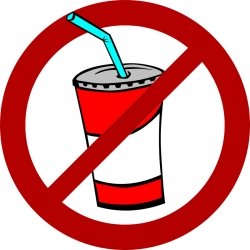"Energy" drinks are everywhere. The beverage makers sponsor models, music
events and videos games. Advertisements for energy drinks are plastered on the walls at sporting events
and on the jerseys of leading athletes. Red Bull, the market’s leading drink, even has its
own television series and printed magazine. The makers of such drinks claim their elixirs
will boost your immune system, enhance your performance and help you feel energized. They certainly are energizing the manufacturer's bottom line, with $53 billion worth of them being sold in 2018 alone.
In the US, almost 50 percent of adolescents and young adults say they buy energy drinks regularly. According to a study from the U.S. Centers for Disease Control and Prevention, 8 percent of young people drink energy drinks weekly, 20 percent think that energy drinks are safe drinks for teenagers and 13 percent think that energy drinks are a type of sports drink. But how safe are they, really?
Last fall, the parents of a 14-year old girl in Maryland sued the makers of Monster Energy drink after she drank two 24oz cans and then died of cardiac arrest. While that case is very unusual, more and more health risks are being linked to the drinks every week.
According to a 2019 study published in the Journal of the American Heart Association (JAHA), energy drinks can cause major health issues, including increased blood pressure and a wealth of heart problems. Energy drinks have been "associated with cardiac arrest, myocardial infarction, spontaneous coronary dissection, and coronary vasospasm," says the JAHA study.
Energy drinks can also disrupt sleep patterns, cause heart palpitations and anxiety, contribute to digestive problems, increase blood pressure and lead to dehydration, according to the National Institute of Health (NIH). Energy drinks “can be dangerous because large amounts of caffeine may cause serious heart rhythm, blood flow and blood pressure problems,” the NIH warned.
Despite this mounting evidence of health risks, there is no requirement to disclose on the drink labels what you are actually getting. Caffeine content, for example, does not need to be disclosed, although it often is. And the marketing of these drinks is heavily concentrated on adolescents between the ages of 13 and 17. As the regulatory status of energy drinks continues to be debated, a growing number of consumers and public health advocates are asking why and how a product loaded with caffeine and other stimulants became so popular among young people. The reasons are a mix of lax regulation, the use of caffeine as a performance enhancer among adults, and a bit of scientific uncertainty.
In the meantime, make sure you and your children understand the risks.














